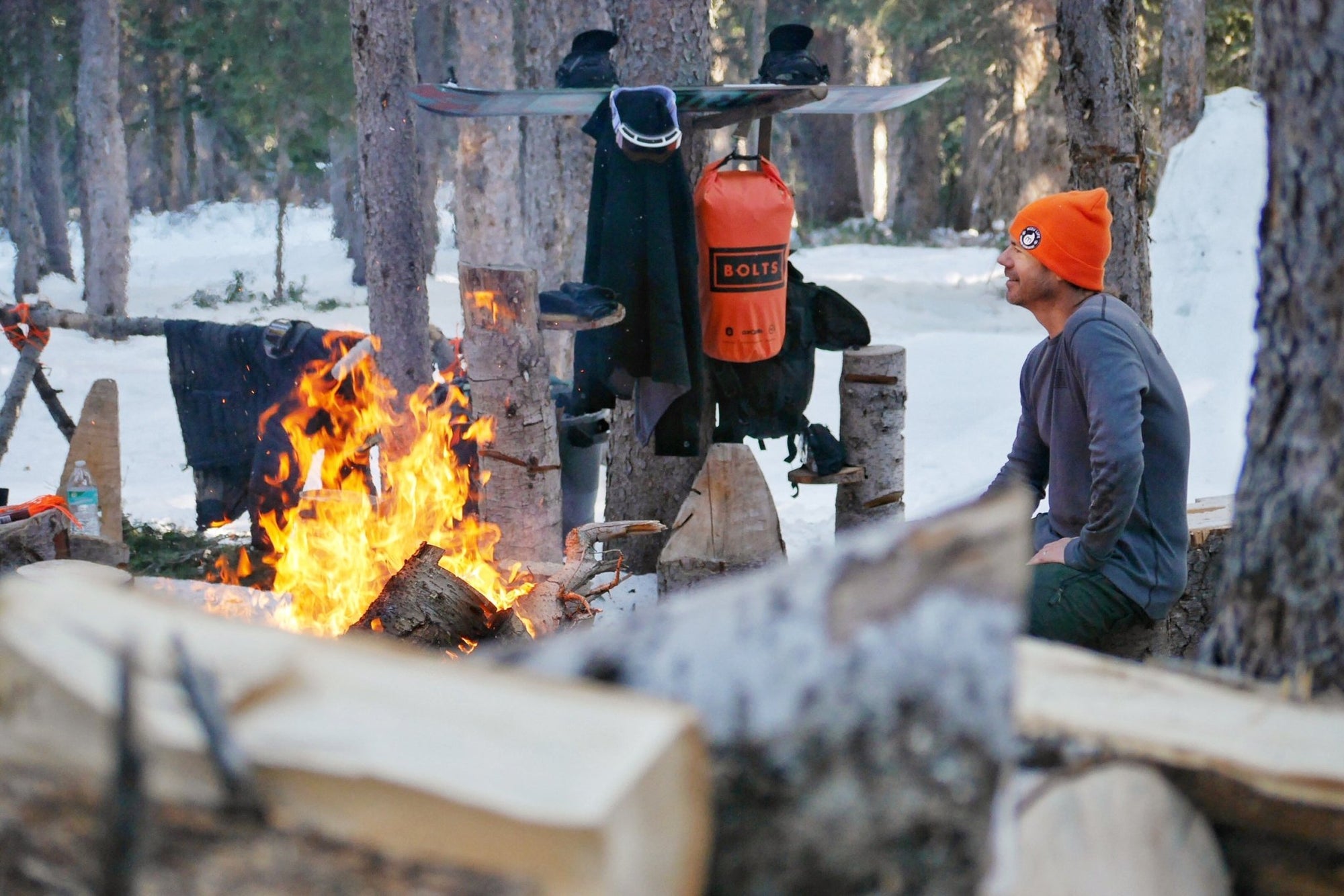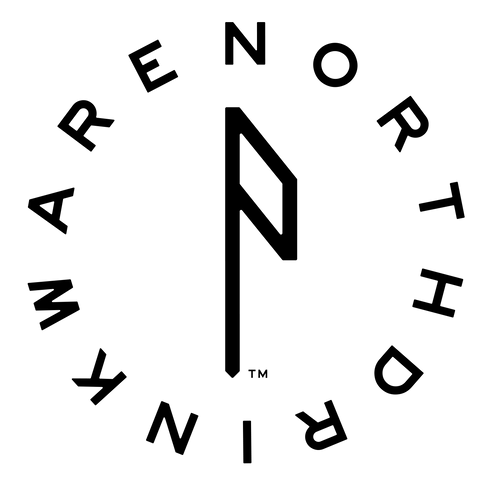The Crux Series - From the streets to the peaks of the Wasatch with Jeremy Jones

THE CRUX SERIES
WASATCH PEAKS & UTAH STREETS
WITH
JEREMY JONES
The Crux Series is a collection of interviews with mountain experts that have a wealth of knowledge about each of the peaks in our glasses. In support of the launch of our Wasatch Collection in Utah, we connect with Jeremy Jones, who's life long contributions to snowboarding have helped shape the culture into what it is today.
Born and raised in the foothills of the Wasatch Jeremy’s knowledge of these mountains and his impact on snowboarding is extensive. He's made a name for himself leading the forefront of street and backcountry snowboarding for decades and was a member to one of the most influential snowboard teams and eras to date. Jeremy has spent years exploring and filming in the mountains of the Wasatch. Much of his illustrious career lives on film in the countless iconic video parts that he has produced over his 20 plus year career which continue to inspire and influence generations.
After bouncing back from a life threatening injury Jeremy has taken the same energy and drive that launched his career on snow to start his own brand What Doesn't Kill You, Doesn’t Kill You. Built around his experiences as a professional snowboarder, the events surrounding that day and coming back stronger. Our conversation touches on everything from what drives him, the early years, traveling the world as a pro, the crux of filming in Utah to a guide of the Wasatch through his eyes.
WHEN DID YOUR CONNECTION WITH THE WASATCH BEGIN?
I was introduced to the range by my parents, my dad would take us skiing as a kid. We had a cabin up in the woods near Heber so we were always in the mountains. I was more comfortable there and liked being alone in the mountains. Anytime we went to the cabin I'd enjoy it, I'd just go wander and that was kind of my thing. I don't think that ever really stopped. When I found snowboarding it just opened everything up. That turned into a more localized wandering, finding my own territory and realizing "Whoa, we could do this everywhere." And to me, this place, Utah and the Wasatch was just big enough that there were options... I mean, I still haven't explored it all. But that was my intro to it.

The family and early days in Heber.


WHAT WAS IT LIKE GROWING UP IN A CITY SO CLOSE TO THE MOUNTAINS?
The city aspect is great, because I've never really felt like I have been from a city. I grew up in the suburbs on the outskirts of the city. I grew up skating, that's where it started. I was taking the bus downtown when I was 13 just to skate. To think of doing that now is crazy, I would never let my kids do that. Now they're older and doing it, but I would have never let them at 13. We were on our own. We'd go down there on weekends and skate the streets. Skateboarding led me to snowboarding, and snowboarding in the streets was the best because it was always accessible. The city used to get snow all the time. If there is two feet of powder and it hits the city, I hit the streets first. I can sleep on it in the mountains because I know where to go in a week and still find it. It always tripped my best friends out. They're just like, "Let's go rip powder." And I'm like, "No, dude. Let's go ride some steel. It's soft out." That's our airbag in the street, so to speak. That being said, to me the best street spots have the backdrop of the Wasatch. Anytime I got a rail shot and you could see the mountains in the background, that was home.

A constant presence in the mags. Photos: @deanblottogray / @robmathis
HOW DID YOU START EXPLORING DEEPER INTO THE WASATCH?
We started venturing out slowly from the resort at Brighton. I learned how to experience the mountains from the side country, which is different from how I see people learn now. Now, it's important that you learn about avalanches before you go. There's so many people out there and so much activity happening but 30 years ago it was so much different. All we had to do was cross the rope 10 feet and we could get such a different powder experience because not many people were crossing the rope. We learned slowly by bumping out just a little bit further every year. And that's how our experience grew. It was a feeling for me, I know what the mountain feels like when I'm on it. My biggest accidents including the avalanche were because I never got my feet on the snow. I was in a Cat the whole time, and I didn't know what the mountain felt like. There is an intuitive feeling that I've learned to trust inside all of that. I aim to trust my intuition 100%, simply because I know what my experience has been otherwise. I know the depth of it in the Wasatch, and I know how I got there. It's crazy to think for 15 years we didn't have beacons on and we were crossing the rope line. That's insane, but we didn't mess with dangerous terrain either. We would feel something, and we would back away. And we never got in trouble, ever. When I have got in trouble, it's because you're pushing a little harder than you should be. If you push against the mountain, it lets you know.
TAKE US ON A TOUR OF THE CENTRAL WASATCH CANYONS FROM YOUR PERSPECTIVE.
PARLEYS
Parley's kind of goes with my intro to the mountains, because we would drive up Parley's to go to the cabin in Heber. Also, my intro to my snowboarding at Wolf Mountain then Park West (then The Canyons and now Park City). It was cheap and they had a hand-dug halfpipe. Our first year of snowboarding we poked around there a bit. It took us about two years to end up at Brighton. So Parley's has those roots and gives access to the back side of the range.

MILLCREEK
We have a mountain bike ride that starts in Big Cottonwood and ends in Millcreek. There's also some really good areas to introduce people to splitboarding in Millcreek right now, so I'm starting to gain a new appreciation for it. There's some good lines that have no exposure and I can just run the kids and my wife through the equipment and how to deal with it. They feel safe and so I've started to use it for that. And we have fun there, my wife loves that canyon.
BIG COTTONWOOD
That's my favorite and I know it more than any other. That's Brighton and Brighton's home. Guardsman Pass is where we started our spot up in the woods there, 20 years ago or so. And we ran it there, hidden for 12 years before they started breaking all our stuff. We think the sheriffs, or the canyon sheriffs just got tired of it. So that’s my mountain, that's my canyon. That's where I'm the most comfortable and I guess feel the most ownership.
LITTLE COTTONWOOD
It's great but it has always been the opponent to Big Cottonwood. In our formative years it was important to stand on a side. And we stood on the side of Brighton. On the Snowbird side (Little Cottonwood), were the Bird locals. I guess they were the old heads, as you'd put it nowadays. We'd always have this friendly battle back and forth but I love it now. The Chickadee run at Snowbird is a great place to teach people, surrounded by fantastic views. Overall Little Cottonwood is steeper and more aggressive. If you're in the backcountry, the exposure and the experience is more intense and vertical. Where Big Cottonwood is a little more laid back, bigger bowls, less intense.

AMERICAN FORK
For True Life, we did a bunch of filming there. That was the last time I actually shot back there. They got really harsh about sledding there for a couple years. And so we fell back and never really went back. It's steep, because that's where Mineral Basin comes in from Snowbird as well. A lot of the places we would sled in the True Life year are actually that face which you can now ski by lift. I guess that's why they were kind of clamping down on us sledding.
YOU'VE SEEN THE WORLD SNOWBOARDING FOR TWENTY PLUS YEARS, WHAT IS IT ABOUT THE WASATCH THAT HAS KEPT YOU HERE?
It's pretty simple, but there's a lot of depth to it. I didn't get here without having the opportunity to experience what I did by riding essentially everywhere you can snowboard in the world, more or less. I experienced all the main spots and halfway through that journey, I was like, "Man, still nothing's as good as the Wasatch." Then I just stopped wanting to go anywhere for the mountains. I would travel for street shoots, but not for the mountains. Sometimes Canada, because you could trust the snow and I appreciated the size of those mountains. They became my second favorite place to go and snowboard. But the snow wasn't as consistent there. Utah snow is just different, the snow here is the best. I can actually say that it is. I've experienced awesome snow in lots of places and tons of the best days, but I can get the best day here a couple times a year, without even trying.

Photo: @tbirdley
SALT LAKE HAS BECOME A MECCA FOR THE SNOWBOARD AND OUTDOOR COMMUNITY. HOW HAS THAT GROWN AND CHANGED OVER THE YEARS?
Well, I think it was inevitable that it would get found out. It felt like it was kind of a secret for a while. I think our liquor laws at the time were in our favor, in terms of the outdoor community for a long time. That kept people from coming here. Those eventually opened up because people decided they were going to come anyway. I think for snowboarding it just took someone from here to really pop. First there was Jason Brown and Brandon Ruff, the generation before us, me and J.P. Walker. They were pros from here who made it look real and doable and were getting paid. We were inspired by that. I think those two and the three generations to follow really helped develop the snowboard community here. We had people coming here to film in the early '90s, Tina Basich, Shannon, Downing, and Peter Line. It was a place to check out, but it was just a film stop. I think it started to build from those early generations.
Now it's a mecca, it really is. You come to Utah to prove yourself because there's spots that you can go to and say, "I'm here. I'm doing it now." It's also the place you can come as an unknown and have a really good shot at making it. There's a lot of eyes here, people are watching. If there's a group of 20 kids out there snowboarding, then I'm going to track them for two runs, because I want to see how they ride and see what they're doing. There's that many now, you've got to really sift through a lot to find the really good ones.
HOW HAS IT GROWN BEYOND JUST SNOWBOARDING?
Now all these different worlds and seasons are coming together, and the people are all sticking around. I would say that it started maybe six years ago. It's starting to find a rhythm more now but it's been clunky up there the last few years because of that. Summer used to be mostly locals in the mountains around here. Everyone traveled here for the winter and now the summers are just the same. People are coming here just as much in the summer, for different things, but to experience the mountains. And I'm not mad at it. We asked for it. We talked about it for 30 years, I've been spraying about Brighton, my hometown. Now I can't even get into the parking lot, you know? We did it to ourselves.
WHAT IS THE CRUX OF THE WASATCH?
That's it now. It's just the traffic and the amount of people. I can pull it off. I know the way to do it If I want it but it is a thing, it’s more effort than it used to be. If you want it, you’ll get it though.
WHAT WAS THE CRUX IN THE EARLY DAYS WHEN YOU WERE EXPLORING, BUILDING JUMPS, AND FILMING?
It would have to be the canyon police. They always seemed after us and you had to really tiptoe all the time. Not so much anymore but through all of the 90's they were on one. They hated us and we could never figure out who it really was, but they were just after us, for years and years. It was interesting. I would say that was the crux, Little Cottonwood was the same. That was a weird era. I think it's over, though. But as far as the canyons go, I can't say anything negative, they're just too good, as far as the land, the air and the way it feels. There's nothing bad about it.

Jeremy and Mitch Nelson.
WHAT HAS BEEN THE CRUX OF FILMING IN THE WASATCH OVER THE YEARS?
I think the crux was how many years I got taken away from here, honestly. The film companies were burnt out on Utah and not wanting to film here, wanting the terrain to look bigger. It's harder to film here, it's thick with trees, and so the big stuff doesn't always look big. When there's nothing around, it looks massive. So that kind of sucked, I think I missed out on a lot here over the years. For probably seven years in a row I would only get five or ten days up at Brighton. Those stung.

Pro Models over the years.
FAVORITE CLIPS OR SHOTS THAT YOU HAVE FILMED HERE?
I've filmed so many things here but there’s a few. In Shakedown there's this cliff into a chute that I did a few things on. It was kind of sketchy because of the way you landed and rode out. People seemed stoked on that at the time. Those are two of my favorites. The other thing is I really did get to film a lot here in the Wasatch. There's another, I don't even know if I ever used the clip but it was a switch backside five off this rim on the back of Brighton. It only worked this one year and I don't even think I could pull that one up, I don't think it made the cut. There’s a few of those.

No shortage of Utah street shots either. Photo: @tbirdley
HEAVIEST MOMENTS IN THE WASATCH?
I had plenty of heavy experiences to lead me to a point to even handle the avalanche which happened in the Uintas. That preparation came from spending that time in the mountains all those years. We knew that if we're going to do this, at some point, something's going to happen and we're going to be stuck. And we're going to have to put in a lot of hours in the cold and, "How are we going to do that? What do we need? What's the minimal amount of things we need to pull it off?" We tried to think through these scenarios and practice. So when the avalanche happened in the Uintas, all that preparation carried us through and got everyone out of there.

Photos: @utavy
WHAT DO YOU VALUE ABOUT SPENDING TIME IN THE WASATCH, IN THE MOUNTAINS NOWADAYS?
Now, I just like getting up there. In the summer it's fun to bike and hike. I haven't been hiking much the last few years, but biking a lot. I think that I still appreciate it more than ever, I look at them every day, they're right here, and to just know that this is home.

Photos: @jussioksanen
WHATS AN IDEAL DAY IN THE WASATCH LOOK LIKE?
I think now it would be pretty cool to know I was coming home every time I went out. That would be the ultimate win. Now it can look like a couple things. It can be just my own mission, up at night, whether it's a little snow skating mission, a couple inches of powder, or snowboarding, and I'm just poking around by myself or something similar with my daughter. That was something that we had going for a while, little night missions. Any days with my family on the mountain are nice, in any form. And then my friend groups. They all scratch a different itch, but all kind of the same.

Jones fam holding down the spot.
WHAT'S NEXT FOR YOU?
I've been building my brand, What Doesn't Kill You, Doesn’t Kill You. Built around that is speaking engagements and podcasts which will be the nucleus of it all. I'm looking forward to building that more. There's some snowboard stuff happening that we'll just have to stay tuned in on, but that looks pretty cool and exciting. And so those are kind of my two things. I want to stay in snowboarding and I want to have my brand to contribute to snowboarding, at least spin off of that and always have that tie. I think that built me and so I want to always contribute and give back, as long as snowboarding will have me around, as long as I can contribute.













